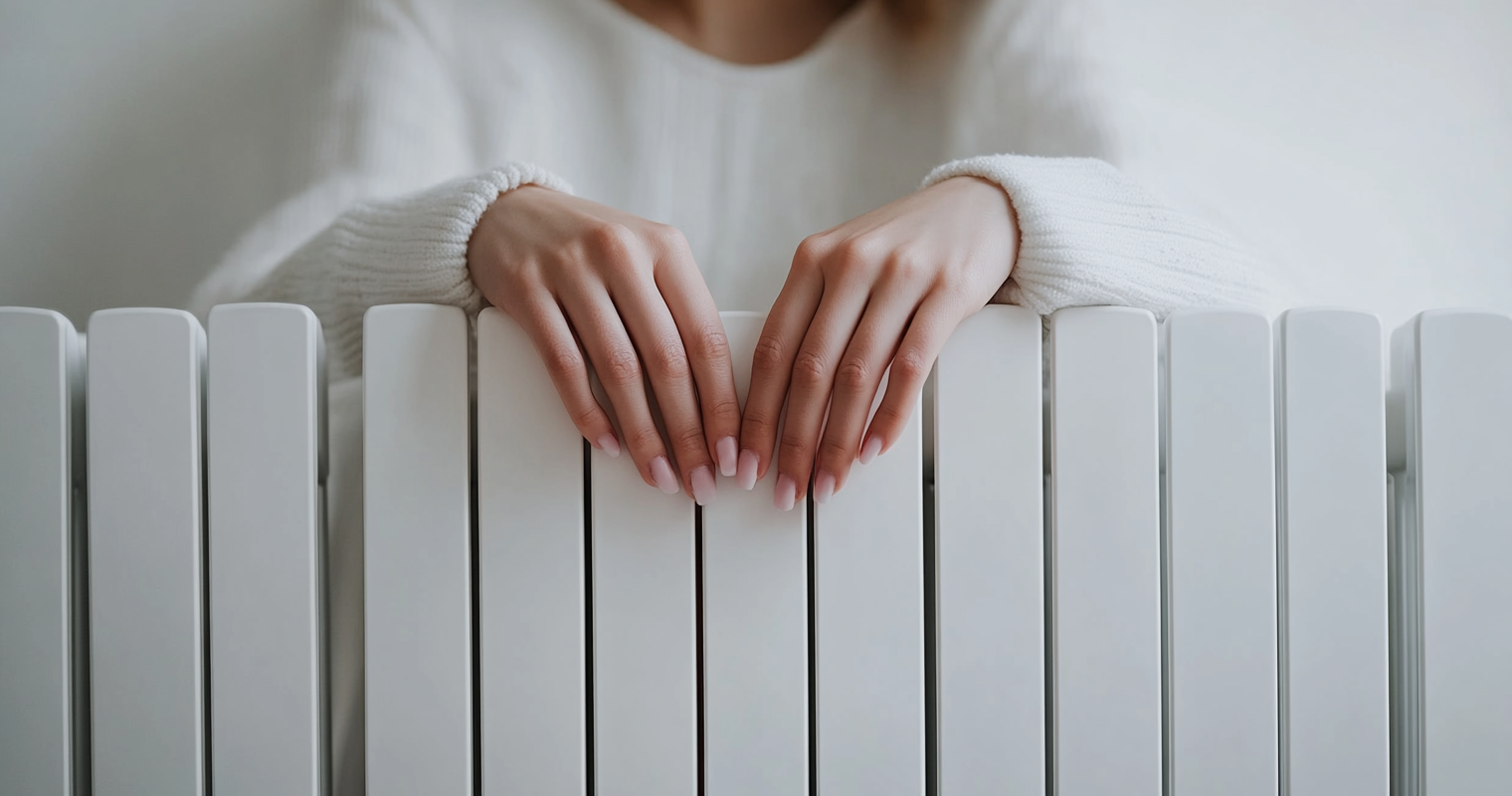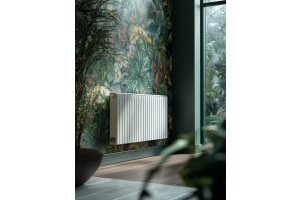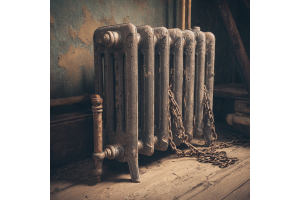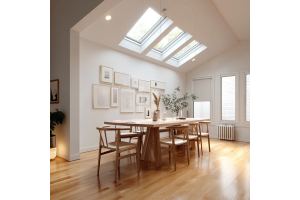
A radiator that isn’t heating up properly can be a source of frustration, especially when the colder months are in full swing. Whether you're dealing with one cold radiator or an entire system that seems off, the good news is that it might be a fixable issue. One of the most common reasons radiators don’t heat evenly or fully is poor system balancing. The process of balancing your radiator system ensures that all of your radiators are working efficiently and evenly, providing consistent warmth throughout your home.
This guide will walk you through the steps of radiator balancing, common issues that can cause radiators not to heat up, and what you can do to resolve the problem.
If your radiator isn’t heating up or only warms at the top, don’t worry—this is a common issue caused by an unbalanced heating system. When a system is unbalanced, hot water rushes through the easiest paths, leaving some radiators cold while others get too hot. Balancing your radiators ensures water flows evenly, delivering consistent warmth throughout your home. Here’s a step-by-step guide to balancing your radiators effectively.
What Is Radiator Balancing?
Radiator balancing refers to adjusting the water flow in your home’s heating system to ensure that all radiators heat up evenly and efficiently. If the water isn’t distributed properly, some radiators may not get as hot as others, resulting in uneven temperatures throughout your home.
When you balance your radiators, you adjust the flow of water by tweaking the valves on each radiator so that the water reaches the radiators furthest from the boiler before the ones that are closest. This process makes sure that each radiator in your home is contributing equally to the overall temperature, which can improve the overall comfort of your living spaces.
Balancing isn’t just about comfort; it can also reduce energy consumption, help your heating system run more efficiently, and prevent unnecessary strain on your boiler.
Why Balancing Your Radiator System Is Important
Before diving into the steps, it’s important to understand the key reasons why balancing is so important:
-
Even Heat Distribution: When your radiators are balanced, your home will heat evenly. Without balance, you may experience rooms that are too hot while others stay cold, leaving you constantly adjusting your thermostat or space heaters.
-
Improved Energy Efficiency: An unbalanced radiator system can cause radiators closest to the boiler to receive too much heat, which can waste energy. This leads to higher energy consumption and increases your heating bills. Balancing ensures that each radiator is operating optimally and uses energy efficiently.
-
Extended Boiler Lifespan: When your system is balanced, the boiler doesn’t have to work as hard to push hot water through the pipes. This reduces the wear and tear on your boiler, potentially extending its lifespan and reducing the need for repairs.
-
Enhanced Comfort: When radiators are properly balanced, each room will be the right temperature without the discomfort of fluctuating temperatures or cold spots.
Common Reasons Why Your Radiator Isn’t Heating Up
Before we get into balancing your radiator system, it’s important to look at some common reasons why radiators might not be heating up. Identifying the root cause of the issue will help you troubleshoot effectively and avoid unnecessary steps.
1. Air in the Radiator (Airlock)
One of the most common causes of a radiator not heating properly is an airlock or trapped air in the system. Air pockets block the flow of hot water through the radiator, leading to cold spots or a completely cold radiator. Airlock issues are easily fixed by bleeding the radiator, a simple process that releases the trapped air and restores proper water flow.
2. Low System Pressure
If the water pressure in your heating system is too low, the radiator may not be receiving enough hot water to heat up properly. Low pressure is typically caused by a leak in the system or the need to top up the water in your boiler. Most modern boilers have a pressure gauge, and if it’s too low, you will need to re-pressurize the system by adding water.
3. Blocked Radiators or Pipes (Sludge Build-Up)
Over time, your heating system may accumulate sludge, debris, or rust. This is especially common in older systems. Sludge build-up can obstruct the flow of water through the radiators, causing them to heat unevenly or not heat at all. This is more common in the radiators located furthest from the boiler or in older systems without regular maintenance.
4. Stuck or Malfunctioning Valves
Radiators typically have two valves: a thermostatic valve (TRV) that controls temperature and a lockshield valve that controls the flow of water. If either of these valves is malfunctioning, stuck, or incorrectly adjusted, it can prevent the radiator from heating properly. Often, the lockshield valve may be accidentally closed, reducing water flow to the radiator.
Step-by-Step Guide to Balancing Your Radiator System
Now that you have an understanding of why your radiator may not be heating up, let’s dive into how to balance your system for optimal heating performance.
Step 1: Turn on the Heating System and Allow the Radiators to Heat Up
Start by turning on your heating system and setting your thermostat to your desired temperature. Let the system run for a while to ensure the radiators are fully heated. If some radiators are still cold after the system has warmed up, it’s time to begin the balancing process.
Step 2: Check Each Radiator
Walk around your home and feel the radiators to see which ones are hot and which ones are cold. Typically, the radiators closest to the boiler will be hot, while those at the furthest points of the system may be cold or lukewarm. Take note of the cold radiators, as these are the ones that need attention.
Step 3: Bleed the Radiators
If a radiator is cold at the top and hot at the bottom, there is likely air trapped inside. Bleeding the radiator is a simple fix:
-
Turn off your heating system to allow the radiators to cool down.
-
Use a radiator key to open the small valve at the top of the radiator.
-
Allow the air to escape until water begins to flow freely from the valve.
-
Close the valve tightly once the air has been released.
Repeat this process for each radiator that is not heating properly. Once the air is released, check the radiators again to see if they’re now heating evenly.
Step 4: Check the Boiler Pressure
Once you’ve bled the radiators, check the pressure on your boiler. The pressure gauge should typically read between 1 and 2 bars. If the pressure is low, you will need to re-pressurize the system by adding water. Follow your boiler’s user manual to add the correct amount of water. Be sure to check the pressure after the system has fully warmed up again.
Step 5: Adjust the Radiator Valves
Each radiator has two valves: a thermostatic radiator valve (TRV) and a lockshield valve. The TRV controls the temperature of the radiator, while the lockshield valve controls the flow of water. To balance the system:
-
Start with the radiator closest to the boiler and ensure the valve is fully open.
-
Next, adjust the lockshield valve on the radiators further from the boiler to restrict the flow of water. This will ensure that the radiators furthest from the boiler get the correct amount of heat and the ones closest to the boiler don’t get overheated.
-
Use a spirit level or thermometer to check the heat levels of each radiator after each adjustment.
-
Make small adjustments to the valves and test the radiators periodically to achieve an even distribution of heat.
Step 6: Test and Fine-Tune
Once you’ve adjusted the valves, let the system run for a few hours to allow it to reach a steady state. Test the radiators again and make further adjustments as necessary. It may take a couple of attempts to get all of the radiators to heat up evenly.
Troubleshooting Common Problems
Even after balancing your radiator system, you may encounter issues. Here are a few things to check if your radiators still aren’t heating up properly:
-
Sludge or debris: If you suspect sludge build-up, it may be necessary to have your system power flushed to remove the blockages and restore proper water flow.
-
Thermostatic valve malfunction: A stuck or broken TRV may need to be replaced.
-
Leaking pipes or valves: If the system is leaking, it could cause low pressure, resulting in cold radiators. Check the system for leaks and fix them promptly.
Conclusion: Achieving Efficient Home Heating
Balancing your radiator system is one of the easiest and most effective ways to ensure your home stays warm and energy-efficient. By ensuring that every radiator heats up evenly, you’ll experience more consistent room temperatures, lower energy bills, and a longer-lasting heating system.
If you’re unsure or don’t feel comfortable performing these tasks yourself, don’t hesitate to call a professional. They can help identify any underlying problems and get your heating system running at its best.
Remember, balancing your system may take a little time, but the rewards—better heating and lower costs—are well worth the effort.







